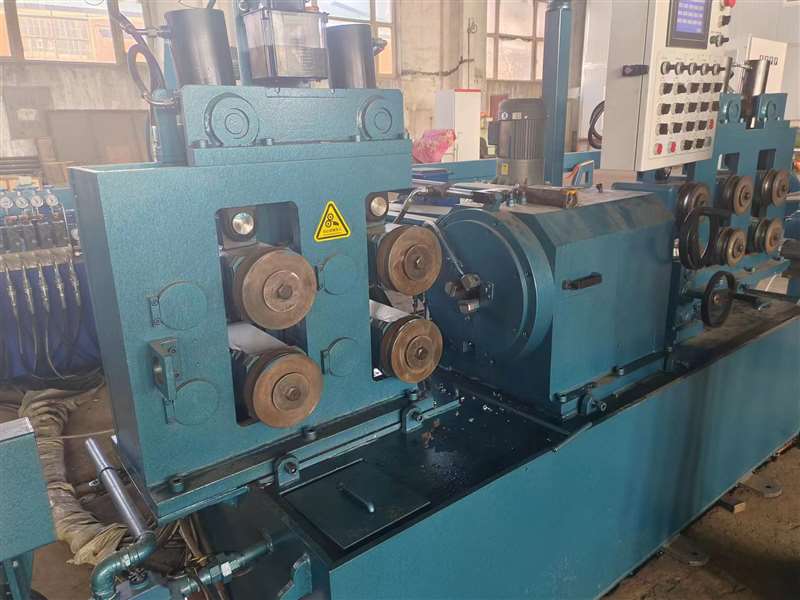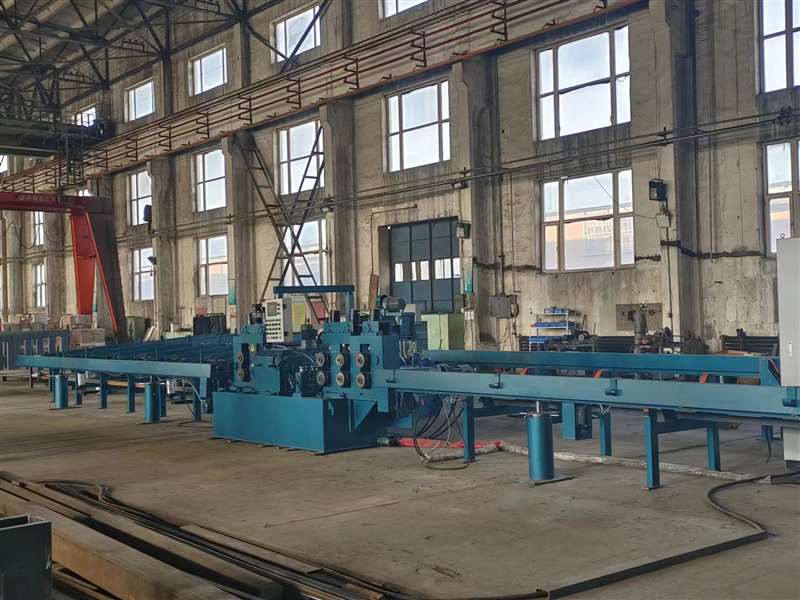- Maximizing Efficiency with Centerless Grinders
- Difference Between Precision Steel Pipe and Cold Drawn Pipe
- Straightening Machines: Types, Functions, and Applications
- Essential Maintenance and Refueling Guide for Centerless Grinders
- Steel Peeling Machines: Advantages and Applications
- Why Choose Mingcheng Peeling Machine? Boost Production Efficiency and Create Dual Profits
E-mail:liu@mingchenggroup.com
Phone:+86 13322202758
QQ:605712576
Address:No. 20, Gangwan Street, Zhongshan District, Dalian City, Liaoning Province
Prevent Rust and Moisture in Centerless Lathe Machines
Maintaining a centerless lathe in optimal condition requires protecting it from rust and moisture, especially during damp seasons. Rust prevention ensures precision and longevity, while moisture control is essential for stable operation. This article outlines effective methods to protect your centerless lathe from rusting and dampness, along with daily maintenance tips to extend its service life.

Methods to Prevent Centerless Lathe from Rusting
Methods to Prevent Centerless Lathe from Rusting
Preventing rust on a centerless lathe is crucial for maintaining its precision and functionality. To achieve this, it is important to control the environment where the lathe is placed. Ensuring the lathe is in a location with low relative humidity can help avoid moisture buildup and high temperatures. Using dehumidifiers or desiccants is a practical way to maintain a suitable environment. Additionally, it is advisable to keep the lathe away from corrosive gases and liquids that could cause rusting.
Applying anti-rust paint or oil to non-working surfaces is another effective method. This forms a protective layer that isolates the metal from air and moisture. The coating should be applied uniformly and inspected regularly to ensure its effectiveness. Proper cleaning also plays a role in rust prevention. Regularly cleaning the lathe’s surfaces to remove dust, oil, and other impurities is essential. Using neutral detergents and soft cloths will prevent damage to the surface, and avoiding harsh or corrosive cleaners helps to prevent unintended rusting.
Regular lubrication and maintenance are necessary for reducing friction and wear, which also contributes to rust prevention. Applying the appropriate lubricating oil to key parts ensures smooth operation and longevity. Moreover, frequent inspections are crucial. By regularly checking the lathe for any signs of rust, problems can be addressed immediately with rust removal and repair. Consistent monitoring of coatings and lubrication helps maintain the machine’s anti-rust measures.
How to Prevent Dampness During the Rainy Season
How to Prevent Dampness During the Rainy Season
The rainy season presents additional challenges for maintaining the optimal condition of a centerless lathe. One of the most important measures is environmental control. Placing the lathe in a dry, well-ventilated workshop helps reduce the adverse effects of a humid environment. Using a dehumidifier or the air conditioning’s dehumidification function can help keep the indoor humidity below 50%, which is considered a safe level for machinery.
Proper sealing and protection of the lathe’s electrical system, transmission components, and other key parts are essential to prevent rainwater from infiltrating. When the lathe is not in use, covering it with a dust cover or plastic cloth can protect it from moisture. Regular inspections and maintenance should be intensified during the rainy season to confirm that all components are functioning correctly. It is important to check the lathe’s sealing performance regularly and replace any worn or damaged seals promptly. Keeping the lathe’s surface clean and dry is also necessary to prevent moisture-related issues.
Preparing an emergency plan for moisture prevention can help address unexpected problems during the rainy season. Keeping moisture-proof materials, such as desiccants and dehumidifiers, on hand ensures that quick action can be taken if needed.
Daily Maintenance Precautions for Centerless Lathes
Daily Maintenance Precautions for Centerless Lathes
Daily maintenance is essential to ensure stable operation and a long service life for centerless lathes. Regular cleaning of the lathe's surfaces and interior to remove oil stains, chips, and other impurities is important for maintaining optimal functionality. Lubricating the lathe at regular intervals, following the lubrication chart, helps ensure that all parts are clean and that the oil circulates smoothly.
It is also necessary to inspect transmission components, such as spindles, bearings, gears, and chains, regularly. Checking for any signs of looseness, wear, or damage can help prevent unexpected breakdowns. Adjusting the tension of the transmission belt regularly ensures that it operates efficiently. Electrical components should also be inspected frequently. Checking the electrical cabinet, motor, cables, and other parts for damage, short-circuiting, or overheating helps maintain safety and performance. Regular inspections of switches, buttons, and indicator lights are necessary to ensure they are functioning correctly.
Cooling systems are an integral part of the lathe’s operation. Inspecting the coolant tank and pipelines ensures that there is no leakage and that coolant levels are sufficient. Regular checks of the circulation pump and filter will keep the coolant flowing properly.
Tools and fixtures require careful monitoring. Regular inspections of tools for wear and replacing severely worn tools help maintain precision. The clamping force and positioning accuracy of fixtures should be checked to ensure that the workpiece is securely and accurately clamped on the machine tool.
Safety is a top priority, and all safety devices on the lathe should be intact and operational. Routine safety inspections help identify and mitigate potential hazards. Additionally, maintaining detailed records of maintenance activities can be beneficial. Recording the time, content, issues found, and solutions for each maintenance session allows tracking of the lathe’s performance and helps address emerging issues quickly.
Operating the lathe according to standard procedures and process requirements is essential for safety and longevity. Careless or improper use should be avoided. Operators should remain attentive to the lathe's performance and address any issues promptly.
Why Choose Us
Why Choose Us
We offer high-quality equipment and comprehensive solutions for centerless lathes, including anti-rust and maintenance systems. With over ten years of experience, we ensure that all equipment is backed by advanced testing and quality assurance processes. Our equipment is reliable, durable, and designed for efficient performance. We provide customized solutions, a one-year warranty, and 24-hour online support, making us your trusted partner in maintaining your centerless lathe equipment.
- Previous:Double-Column Horizontal Band Saw: Precision Metal Cutting
- Next:Adjustment and Cleaning of the Straightening Machine
-
2023-09-19How The Round Steel Peeling Machine Works?
-
2023-09-19Round Steel Peeling Machine





